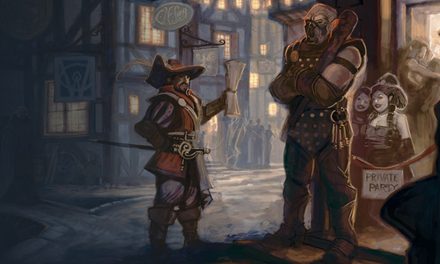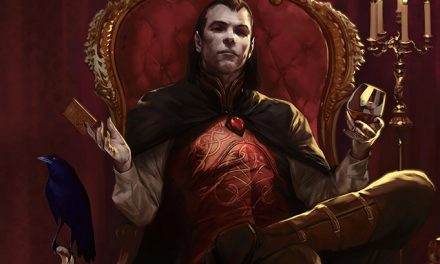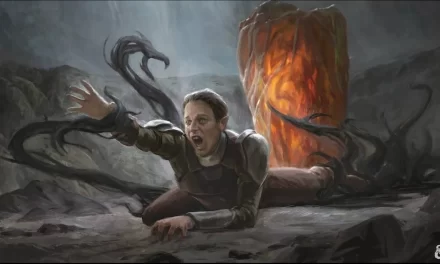Being a GM is not easy. Just ask anyone who has ever been in the GM’s seat!
Every GM has their own unique style of building plots and games for their group. So, of course, there are plenty of helpful pieces of advice that are suitable for anyone.
That is why many GMs search for such guides and either follow them or rework them for themselves, which is a correct idea. After all, role-playing is a social activity, so it is good to take others’ experiences into account!
However, there are certain tips that aren’t frequently talked about (at least enough, in my opinion) in guides to GMing.
Specifically, what kind of personal touches can a GM bring into the game to make the game and story more “real” for everyone at the table?
These are the 9 Personal Touches that GMs can use to bring their game to life!
(Also, an important warning: due to the nature of the discussion, I will refer to personal experience and works of fiction. So, I apologize for possible spoilers beforehand and for mingling the advising article with personal expressions).
Touch 1: The Question of Fear
My first DnD campaign was Curse of Strahd and my first DnD GM was my friend who, years later, became my wife. So the game turned out to be even more social for me than I imagined at first!
When GMing Curse of Strahd, Out of the Abyss, and similar campaigns, she always asks one very specific question:
“What does your character fear?”
I didn’t realize it at first, but this is an excellent instrument for a GM to use. And I am not necessarily speaking about the usual idea of “hitting player characters where it hurts”.
Actually, the knowledge of fears helps to make the story and conflict much more personal. It’s not even about hurting characters and there isn’t even a need for things like trauma to be a part of this.
For example:
Is your Sorcerer afraid of his own powers? Introduce a villain who revels in using that same power for harming others.
Is losing all the comrades the Fighter’s nightmare? Bring in an NPC, who has lost everyone dear to them and is on the verge of despair.
Does the Barbarian fear becoming powerless? Present the land with a tyrannical ruler who bends everyone and strips their will and power away.
All these situations do not harm characters – but they DO make them involved. They make the stakes personal, even if they weren’t from the beginning, and that feels much more about the characters than “your alignment/deity/oath demand”.
And, of course, this is especially ideal when playing horror campaigns.
Remember that the best horror is a personal one. Lots of DnD creatures have the ability to read people, feel their fears, and use them against the characters.
GM knowledge will most definitely help here!
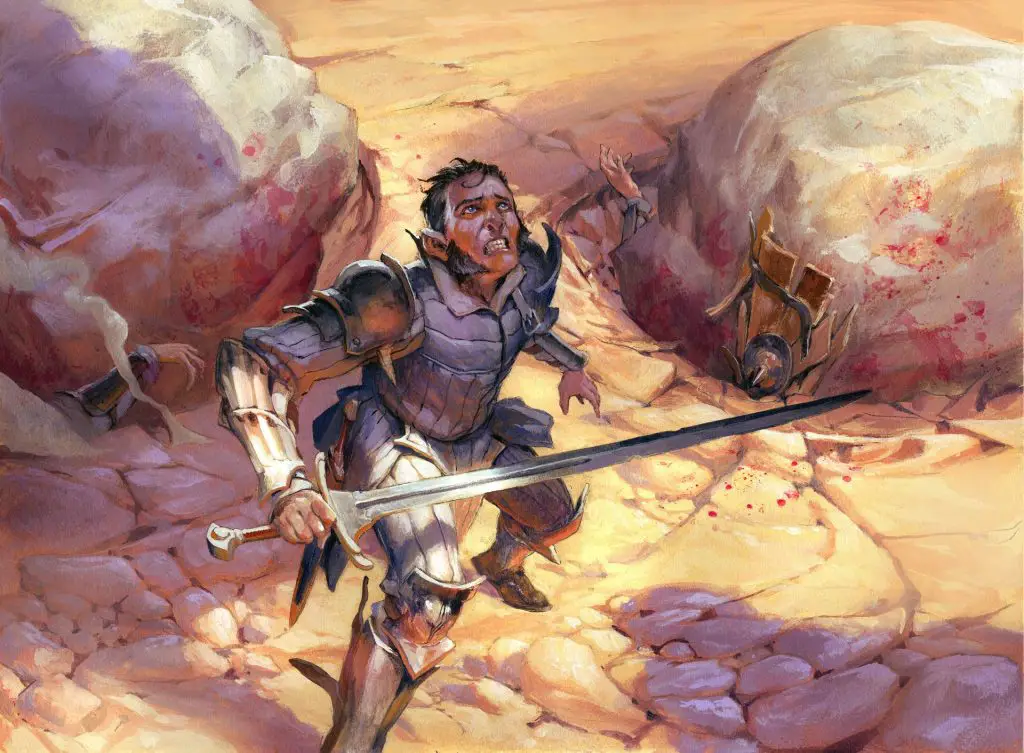
Overcoming Fears and Character Growth
Another thing to remember: stories about overcoming your fears are among the best and most intense.
What would you do if a player says “My character is fearless” or “My character has nothing to worry about”?
Well, the first case asks for a talk with the player about the various layers of personality.
Assure the player that the question is not about harm. Instead, it is about the chance for them to shine personally and to give depth to their character.
Maybe this warrior is fearless because something happened in the past, and so the warrior welcomes danger. Well, what about the perspective of never having a glorious death, but instead turning old and frail and dragging through years?
The second idea is countered through the simple “yet”.
Again, cooperate with the player and discuss – what may shake this “having-no-worry” attitude. What problems may disturb the character and which may bring a type of emotional turmoil?
A word of warning though…
If a player presents a character with some negative traits, fears, and so on, always ask “Do you want your PC to stay like that?”
It happens that some players deliberately create a flawed character with fears, bad traits, and so on. They hope that the story and the party will help the character to eventually overcome these traits and, ultimately, become better.
Like the Rogue who learns how to trust others, the Cleric who learns not to judge others too harshly/quickly, or the Barbarian who learns the value of patience and discipline.
Players want to feel that their characters are growing as people, but may neglect to inform others about this hope. Of course, in the majority of these cases, others think that the player wants exactly that type of character and so the character does not evolve.
Also Check Out: The ONE Question To Make Better Characters!
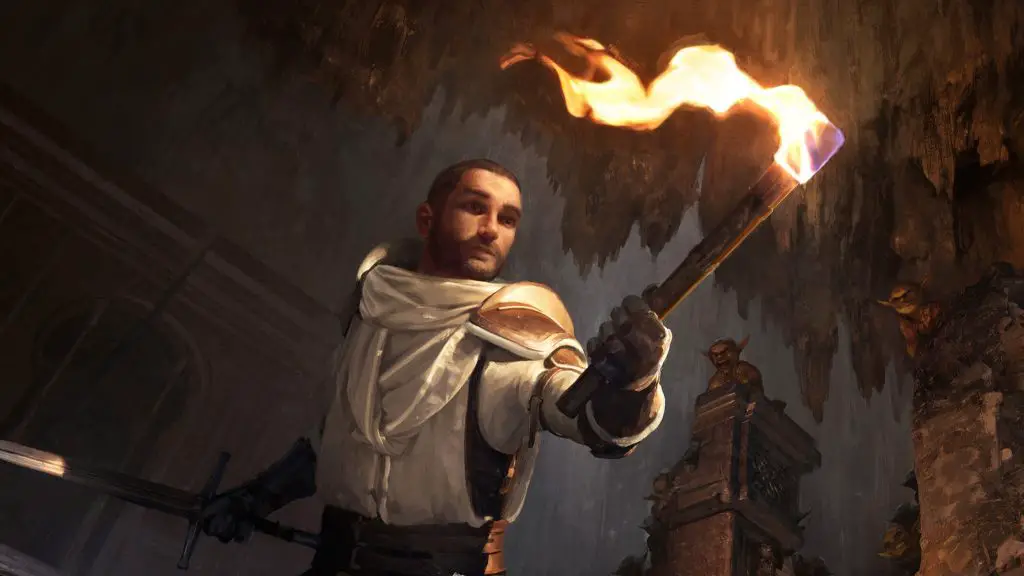
Touch 2: The Push from the Past
As a GM, don’t forget to use your player characters’ biographies.
This is a very simple piece of advice, but it’s surprisingly easy to miss!
I am not speaking about stated goals or about character-related quests and so on – that goes without saying. I am speaking about things that may seem to be without mechanical benefits: their place of birth, professions, backgrounds, and so on.
How can these influence the characters?
First of all, it is involved with various lore rolls.
Even in the real world, there are tons of things that a person knows just by the virtue of being born and growing up in some place and culture. Meanwhile, these things may be completely unknown to a person from another location.
For example, imagine that you are GMing Tales Trees Tell, and you have the characters from Neverwinter, Mulmaster, and Amn. They have to roll to discern whether they know anything about the Quivering Forest or Jenny Greenteeth.
But if you have a character from Phlan, that player should either roll with advantage, get a reduced difficulty or waive the roll altogether – because the character grew up listening to the tales about the forest and the ancient hag.
(I personally prefer giving the players notes with the information to let them explain the facts to the group by themselves).
Second thing is that background may influence navigation and survival.
If you are playing Out of the Abyss, you wander through Underdark, where it is pretty hard to find food and water. But what if there are Drow, Duergar, or Svirfneblin in the group? Well, roll with advantage – this is your homeland, after all!
You Might Like: What Every DM Can Learn From South Park
Influence on Social Situations
Don’t forget that a character’s biography may also influence social situations.
Did you state that you grew up on a farm? Well, it will be easier for you to have a good talk with the local farmers than it would be for your “fancy” friend with an obviously aristocratic demeanor.
Is that NPC from Unther? Oh, you have a Dragonborn with Tymanther heraldry in your group. The conversation might then begin to feel tense immediately.
Of course, nothing from your biography should make the situation either auto-successful or auto-failed.
But if you use these details, the players will feel that they are part of the world. They’ll see that the world also reacts to them and that their lives influence certain circumstances around them.
Incidentally, it also helps everyone to write better biographies and increases immersion!
(And, for Asgorath’s sake, don’t forget about Background Features. While they usually don’t have mechanical benefits, they can open wonderful role-playing avenues!)
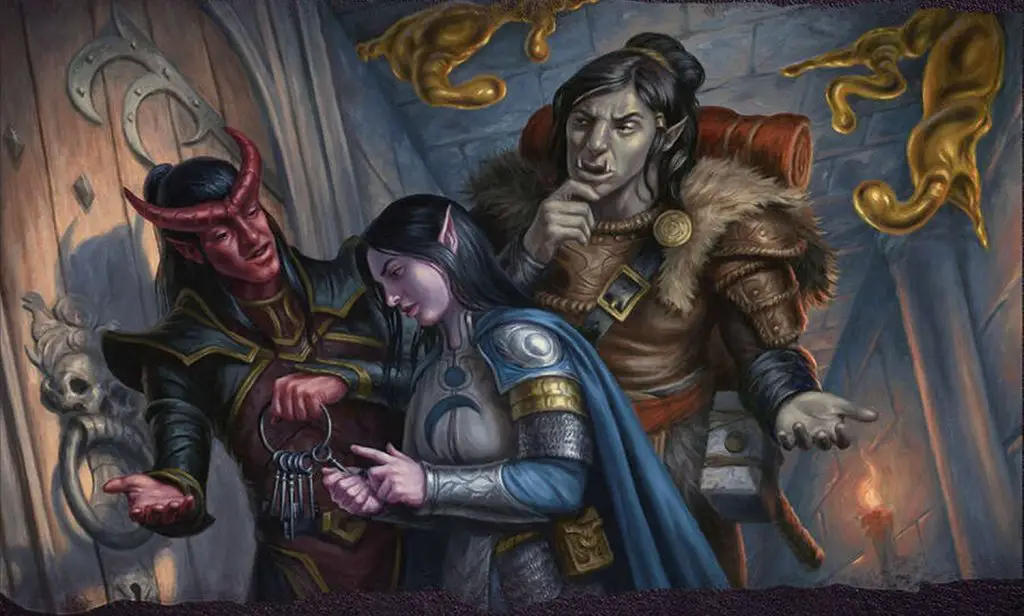
Touch 3: What You Are is What You Play
Do not be shy to remind the characters about their classes and alignment when necessary.
I don’t mean the class features, of course, though new players will need this sometimes. But remind the players that a class is not just a set of numbers.
Yes, a Cleric, a Wizard, and a Sorcerer may cast Fireball with the same efficiency… but there is a deep difference.
A Cleric will draw power from his faith and let it blossom with heat or fire. A Wizard will repeat an ancient incantation, honed precisely for this purpose. A Sorcerer will unleash the inner fire, giving it form.
And this doesn’t just apply to spellcasters!
The same weapon attack is very different when dealt by an enraged Berserker, a calculating Battlemaster, or a smiling Swashbuckler. These small details give great flavor to the character and make them feel different.
Regarding Alignment
While it’s often criticized, character alignment can also be a very good instrument for creating a kind of difference in the character. If a player has doubts about what to do, a GM may point to the character’s alignment for inspiration.
For example:
Player: “Oh no! Our Wizard is down and the enemy is retreating. I can easily chase down the enemy and finish them off, but the mage may die…”
GM: “You are of Good alignment. What will you do?”
Player: “…You’re right. We’ll catch the enemy and deal with him later. I rush to my friend with the healing potion in hand”.
I would also recommend making alignment dynamic.
Personalities are not static and player characters are not locked into their worldview. The simplest way to do this is to make a sliding scale from Lawful-Chaotic, Good-Evil and assign certain points for certain actions.
Of course, the scale itself should take into account character backgrounds (again).
For example: recently my Lawful Neutral Wizard got a few points toward Good for several acts of mercy that brought no benefit to him and could be potentially hazardous.
At the same time, the harsh interrogation of Dragon Cultists didn’t shift him to Evil. He did it only out of necessity and without joy. Additionally, as a Hobgoblin, his worldview tends to be unavoidably harsh and militaristic which adds to this decision.
So, make your players explain their differences. And, talking about explaining…
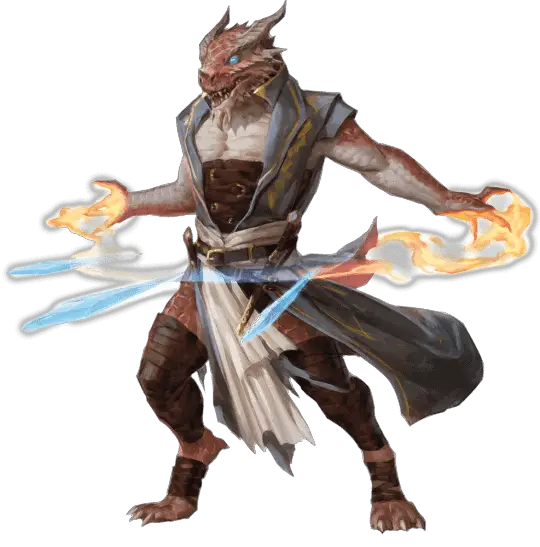
Touch 4: The Art of Description
Matt Mercer likes to say “How do you want to do this?”, inviting a player to describe the consequences of a critical hit or the death of a powerful enemy. It is a very good idea, as it again lets the player feel more involved.
But the same rule can be applied to other actions as well. Players may just state their intention, but urge them to describe the way of doing things, however trivial they may seem.
Does the Bard suggest “I perform a song to invigorate soldiers’ morale”? Ask “What is the song about? What is your tone?”
Does a caster say “I cast Augury as a ritual”? Ask “How does your ritual look like? How are you asking for guidance?”
Perhaps the Fighter says “I want to make a battle plan”? Ask “How do you plan? Do you use maps and markers, or do you need only your mind?”
Note that there is no “What are you doing?” here. The mechanical aspect of all the above is clear.
The question here is about description. It’s about letting the players bring their own style and unique approach to any given task in a way that makes the moment feel richer and more alive.
With this in hand, we may be sure that they – again – will feel different and feel that they participate in the stream of the world!
Ah, yes, if we are speaking about the world…
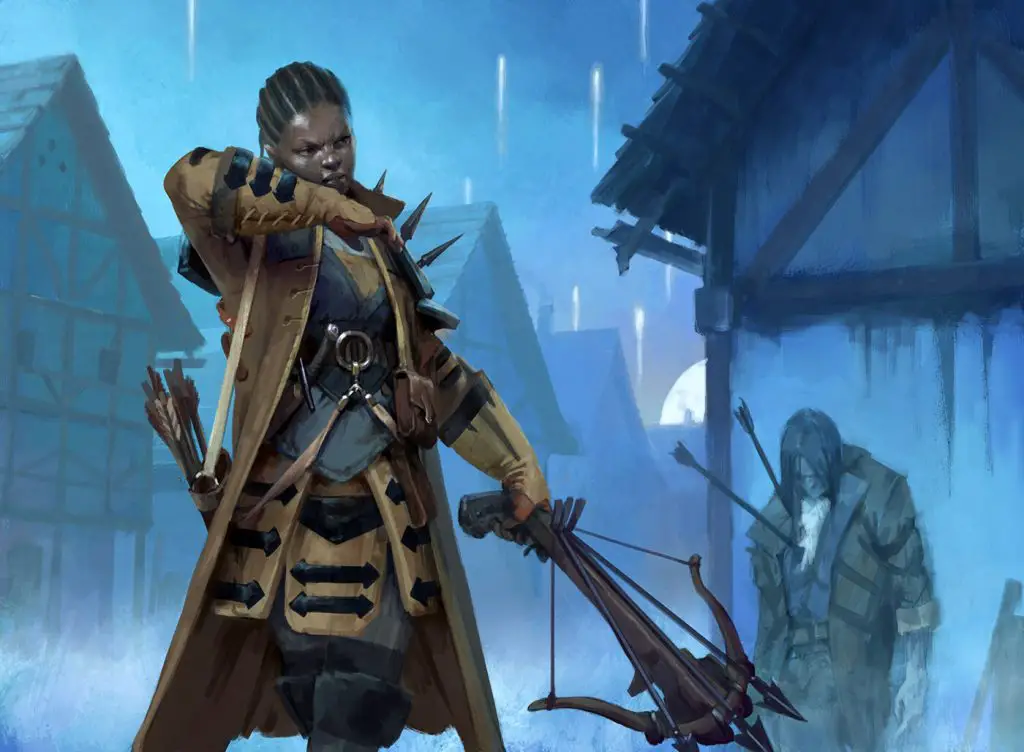
Touch 5: The Stage the Players Built
The method above doesn’t need to be limited only by the description of actions.
Maybe the party is going to the Cleric’s hometown? Ask “what does your town look like? How does your family live?”
Does the Rogue have a criminal contact? Ask “What kind of person is your contact? How did you meet?”
Does the Fighter belong to a proud martial order, not depicted in books? Ask “How is it organized? Who is the Grand Commander?”
All these questions let the players participate in your world-building, and, again, feel the campaign and setting as something personal. It’s now something they have participated in themselves which means it’s something to care about.
Keith Baker did this wonderfully in his Q’Barra campaign, inviting the players to participate in the creation of the town they were to defend and develop. So, this method can be put into the very foundation of your campaign, but it can also be applied to smaller cases.
Interestingly, there is one more thing specifically for GMs who run several campaigns simultaneously with different players. So, you are tired from playing everyone except player characters or have a creative block?
Suddenly, you can invite a player to play an NPC role for a while. Give the concept, or just discuss the idea, and let the player breathe life into this new NPC character. If your player is creative, it will be a blast!
(For example, I have invited a player to play a mad vampire prophet. Another player I got to become a highly eccentric theatre director. And I was invited to play a Big Bad of a story arc myself).
Related: Immersive Theatre Techniques For Dungeon Masters
Motivating Collaborative Worldbuilding
So how can you motivate players to do descriptions and participate in world-building?
Some gaming systems, like Exalted, provide dice bonuses for good descriptions. DnD by default doesn’t do this, but no one prohibits a GM from rewarding a good description!
Mechanically it may reflect in giving advantage or decreasing the DC of a roll. Of course, you could also give some experience points for helping with the world.
A fair warning, though:
There are players who prefer to be more direct or “to the point” and are perfectly satisfied with it. If they are in the same group as others who love detailed descriptions, it may lead to a situation where some players constantly get some bonuses, while others do not.
So, before implementing such a feature, make sure that the whole group is aware and on board with this idea. Nothing happening in the game should reflect in real life.
Speaking about real life…
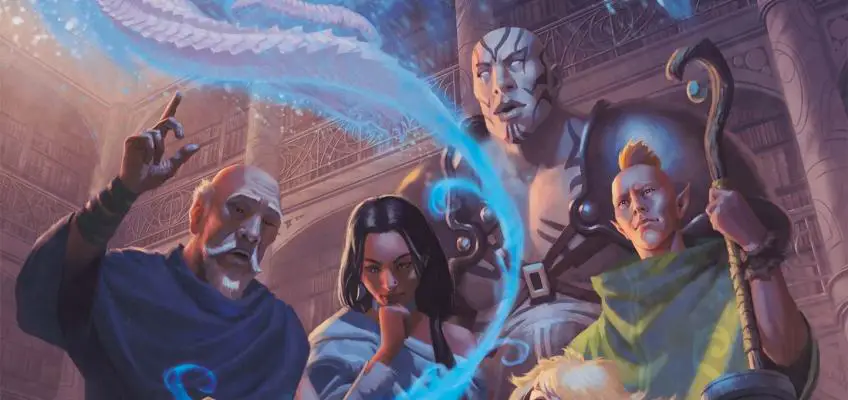
Touch 6: The Knowledge from Without
Use your IRL knowledge and skills to enhance the game.
No, I don’t invite you to bring IRL physics into the fantasy world, of course. That’s how you can end up with nonsense like the Peasant Railgun.
It is about using something you are good at for plots and twists.
For example, there may be the pitiful sight of a GM who is making a naval campaign yet they know nothing about ships. Unfortunately, this would be obvious even to similarly non-knowledgeable players.
So, if you are making your own campaign – use what you know! (Or at least do some research into these topics so that you can better bring them to life in your game!)
If you’re a historian, you can easily bring cultural elements and base plot moments in your game on historical events. Give your players certain Battle of Agincourt or Byzantian intrigues.
Are you a lawyer? Why not build plots around detective stories, laws, and loopholes as a battle of wits for the players? Just be careful about roleplaying devils and Genies!
Perhaps you’re especially knowledgeable about medieval weaponry and combat. Experiment with weapon rules and bring the atmosphere of tournaments and deadly duels in shadowy streets!
Are you a linguist? Use riddles and language games to make language knowledge important for your campaign. Incorporate things like “you realize that, while he seems honest, his name means “a deceiver” in Abyssal”.
Let every language in the group shine – and that may help shy players to shine too.
For example, if you have met Orcs, and only one character speaks their language, it’s that character’s time for the spotlight.
Recommended: The Best Books That Every GM Should Read
Knowledge Tips
There are a few quick knowledge tips that I’d like to mention, though.
First of all, your real-life skills may be of immense help – but you are not obligated to use them.
If you made a fascinating story that has nothing to do with your real-life profession, roll with it! Your own experiences, knowledge, and profession are simply extra sources that you can pull from to add more detail and depth to your game.
Second, remember: you may be knowledgeable in some sphere, but your players may be not.
A riddle based on programming techniques will be completely unbreakable for people who know nothing about computer code. Even if they have an intelligent character, this could still be frustrating or be otherwise completely forgetful.
Meanwhile, an obvious reference to the Russian “Time of Troubles” will fly over the heads of the people who are unfamiliar with this turbulent historical period of several centuries ago.
So, remember that you are creating a shared story.
Most importantly, give the players instruments to explore and tell their stories within it based on their own interests, strengths, and personalities!
Related: The 7 Types of D&D Players
Finally, it’s known that some physical props are always welcome, but many people underestimate the importance of certain catchphrases. By that, I mean phrases that the GM can use to give the players a hint.
This is especially helpful when the party is going to make a monumentally stupid decision. (Let’s be frank, the majority of groups have done this at least once!)
For example, my wife will often call for an Intelligence roll in these situations. Another fellow GM usually says “Do I understand correctly that you are going to…”
Even if a player continues, these phrases do also serve as fair warnings.
Additionally, they can also help to maintain good relationships without a chance of being a “killer GM.”
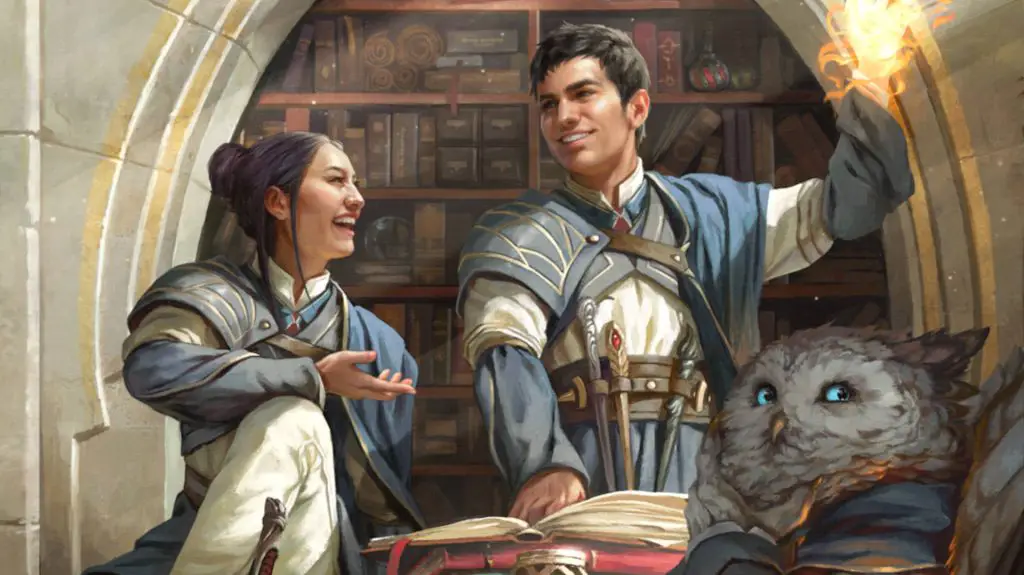
Touch 7: The Bindings of Relationships
NPCs are an important part of any game that goes beyond simple hack-and-slash. Of course, NPCs are another way of making everything personal and giving the players an emotional attachment to the story and the world.
Your alignment may urge you to resist the evil mage. But it feels much better when this very evil mage was going to sacrifice you or steal your victory.
You aren’t fighting against the villain strictly because of your alignment. It should be personal!
You may help a commoner because of a promised reward. But it is another story if said commoner helped you to recover from wounds and became a friend of yours.
So, make NPCs feel alive, but don’t fall into a very common trap.
You may create a despicable villain, a charismatic hero, a beautiful princess, or an adder-tongued witch… and nothing of this guarantees that your players will love or hate the NPCs you assigned to the roles.
Very often their sympathies will revolve around very unexpected people!
In one game, I gave the group an NPC – a street urchin whose function was just to show them around the unfamiliar city. They adopted her and she became a party member and a good battle caster in the future.
Meanwhile, in another adventure, I presented the group with NPC mentors for their characters – a group of experienced mages. One of them, due to the player’s sympathy, got a personal arc, love story, and a change of mind about many things, which wasn’t in the initial plan.
Recommended: Running Published Adventures
Life Creates Relationships
I think, almost any GM will confirm that you cannot guess whom your players will love.
It’s a meme at this point.
You could have big plans for the group’s interactions with a certain important NPC that they then completely ignore. Meanwhile, they end up falling in love with the most random and unimportant NPC that they find!
(Kind of a “Boblin the Goblin” scenario)
So what should you do then?
Simple: give a spark of life and some defining trait or memorable quirk to all they encounter!
Note those whom players are interested in and develop them. Find ways to weave them further into the story along with the PCs to create a type of connection to the game world that is being created.
Does the NPC feel sympathy for the antagonist? You (or more specifically the player characters) could give him a redemption arc. They might show the NPC that he is really a villain, which can prompt the characters to chase the enemy even harder.
Do your players want to protect and train a teenager from the town they saved? Allow them! Don’t make the teen into a weak link – have the teen become stronger under the PC’s guidance and give some hints at a heroic future.
(You could even introduce that teen as a hardened warrior in a future campaign with the same players and make the valiant commander remember their old mentors with love and fond nostalgia).
Are the characters in conflict with some NPC? If it won’t ruin the story – stoke the conflict. Rivals and adversaries can be as memorable as heroes and helpers!
And even if an NPC will never feature again, these peculiar traits and quirks will help the players to remember them. Especially if players are bad at remembering names!
Not everyone may remember some “Krass Brand”, a city official from a few sessions ago. But many players will react if you remind them of “an official with a golden quill and Gomez Addams smile”.
You Might Like: Essential Tips for Avoiding GM Burnout
Unspoken Behaviors
Additionally, you can add some gestures or ticks to your NPCs.
One of my favorite NPCs, an information broker, always twirls her hair around a finger while negotiating – and even if I do not name her in a scene, the players immediately recognize the signature gesture.
Or you may introduce someone who often clicks a pocketwatch lid. Much later, you could click it while a character is eavesdropping on the enemies’ discussions which gives the immediate hint.
Even if a character has no means of seeing the conversation, this gives them an opportunity to “figure it out” that the characters will LOVE!
In my own book, exactly that happens: the heroine recognizes the antagonist because of his mannerisms.
He is a master of disguise and has met her before. From those interactions, she remembers his habit of touching his boot with his cane. Meeting her under another disguise later, he is very careful not to do this.
However, she happens to see him while he doesn’t know she’s watching, recognizes the gesture, and puts all the pieces together.
So, note which NPCs your players love or hate, and elaborate on that. Again, make it personal and bind these relationships to the rhythm of your story.
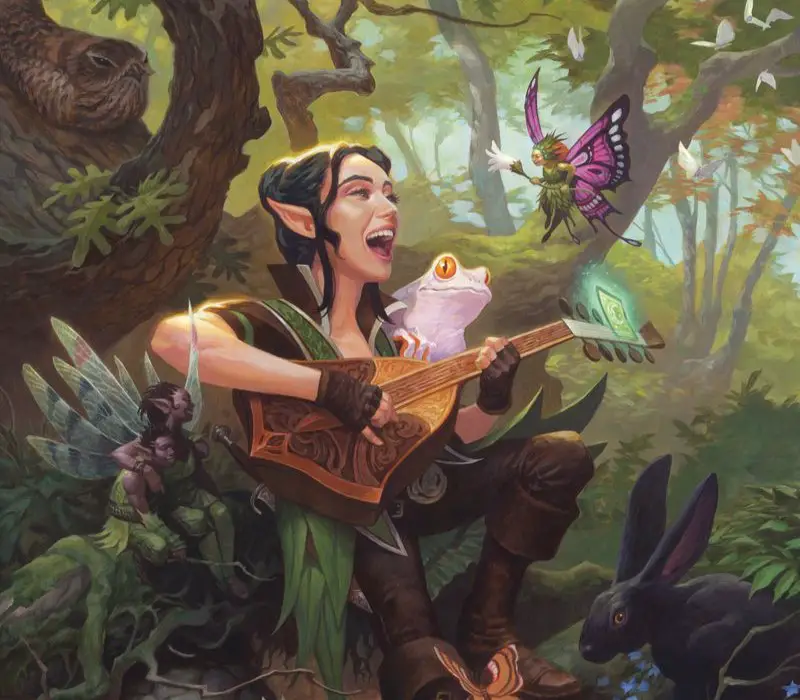
Touch 8: The Rhythm of the Game
When I say “rhythm” in this context, I actually mean three separate things: touching story, combat, and sound. What are the meanings and differences?
These are especially powerful when paired with a Red Thread element in your stories!
Rhythm of Story
The rhythm of the story is about pacing.
Even the best story becomes tiresome if it never changes the tone or pace – as with monotonous music.
Alfred Hitchcock, one of the most brilliant thriller directors in history, could make films that hold you tense for every minute of them… but films are about two hours long, and a campaign is much longer.
So, plan the story accordingly.
Alternate tense and thrilling episodes with some breathing ones. Even if the story is about war, there is always time for having rest, socializing, and mourning after all.
The same is true about social campaigns. The story about court intrigues may be interrupted by duels, assassins’ attacks or uprisings/feudal conflicts.
Additionally, the rhythm of the story is about story arcs for characters, if you use them.
You may devote several sessions to one character or shift between them. Just watch the rhythm carefully to make sure that one player does not overshadow others.
Also, keep it at a natural and gradual pace within the story. Trying to put quests for all the characters in a single session is often a bad idea!
Rhythm of Combat
Rhythm of combat is somewhat twofold.
First of all, try to make the combat not only repetitive rounds but also diverse and interesting. Use minions, surroundings, location changes, and give vivid background descriptions for what is happening.
A very good example is the final duel between Anakin and Obi-Wan in Revenge of the Sith.
Despite using the same weapons and abilities throughout the whole fight, they change locations and tactics frequently. This makes the fight very intense and fascinating to watch.
Related: How To Keep Combat Engaging in Your D&D Games
But the other thing is about time consumption.
Let’s be frank, combat is the most time-consuming activity in almost any RPG.
If the game session includes both journey, puzzle-solving, and a fight against the enemy… well, there are good chances that the players will already be tired.
The best idea, in my mind, is to devote separate sessions to some important fights. This means big encounters such as the confrontation with the main antagonist, a city siege, or attacking an enemy ritual, for example.
By giving these important moments their own sessions, you make sure that the players will be ready and fresh,
(Of course, I’m mostly speaking about games where you have time to do as you wish. Games during conventions, for example, cannot afford it.)
Rhythm of Sound
Finally, we have our third Rhythm: the Rythm of Sound.
Rhythm of sound isn’t necessarily ignored but it also isn’t examined as much as it could be.
Yes, any decent GM knows that music and atmosphere are important. But there are some tricks you can play by combining music change, silence, and unexpected tracks.
A brilliant example of this can be found in the movie Final Fantasy: Advent Children.
The first part of the final battle is almost eerily silent: Cloud and Kadaj fight, but there is no music, only grumbles, clanging of swords, and some phrases. Kadaj falls, Cloud pursues, and finds his blade parried by a horrifyingly familiar sword.
“It’s been a while, Cloud”, says Sephiroth.
And at that very moment, the silence breaks with One Winged Angel, the most iconic music of FFVII.
From the audio rhythm point of view, the scene was built flawlessly with the music (and lack of) working perfectly to build the drama.
Related: Making the Characters of Final Fantasy VII in D&D 5e
So, you may do the same!
Describe a pleasant conversation, make a serene music play, follow the flow of the talks… and hold your finger over a different button.
Because you know that, in a few moments, a seemingly naïve merchant will ask “By the way, who are you? Really?” as the music will suddenly change into a tense and threatening tone. It’s now clearly showing that this man should not be underestimated.
This demands a precise calculation of the moment, which is why I call it a “rhythm”. Of course, it’s even better if you know about the changes of tone in the background music and build your speech according to that, but that isn’t an easy task.
Also, don’t be shy to use famous tracks. In fact, they can immediately set an appropriate tone!
Do you describe a benign politician who has just rewarded the characters and is leaving the castle? Switch on The Damaged Coda and see how many players realize that something went wrong.
Do you make an entrance for the head of state security? Bring on James Bond Theme and the players will immediately understand the subtext of this meeting.
And, of course, don’t forget about sound effects!
You may just suddenly put on a lion’s roar instead of describing it, or a cannon shot at the words “the Fireball explodes!” or use the sound of heavy steps to bring a menacing atmosphere.
(Are you GMing Star Wars in OT era and your players don’t take the hints that they shouldn’t invade a creepy place? Put on the sound of heavy mechanical breath. It provides maximum speed every time!)
A Word of Warning About Sound
A non-obvious problem may arise though: you need to be sure that your programs for playing music work without glitches.
Otherwise, the rhythm and moment may be ruined. And, of course, all the tracks should be at hand and a GM must remember them.
And, for Sardior’s sake, don’t try to use music directly from YouTube if you can avoid it. An Internet lag may disrupt the rhythm, but nothing breaks immersion and atmosphere like a sudden YouTube advertisement.
Unless the final confrontation with Strahd Von Zarovich involves him selling car insurance or a “Get Rich Quick!” scheme, it will completely break the moment.
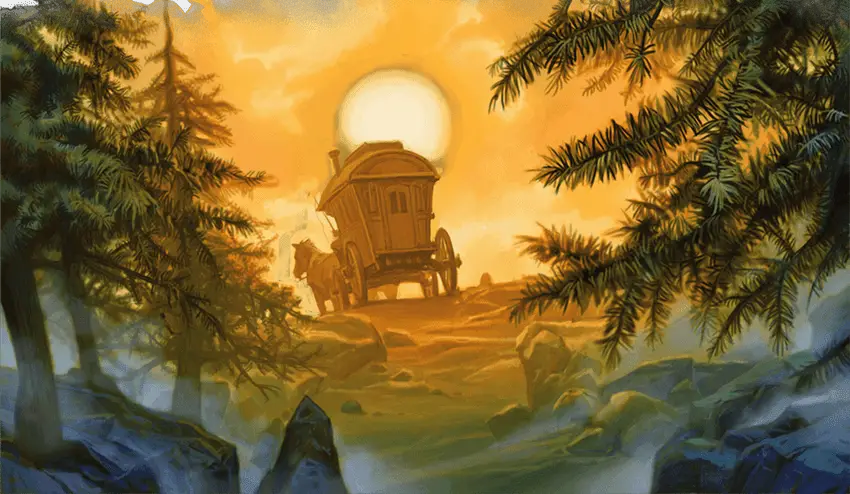
Touch 9: A Sting of Conclusion
Every session comes to an end and every game comes to a moment when the players pack up their things and go home. Usually, the session ends with some description, but sometimes it just doesn’t feel like enough.
It doesn’t feel like a conclusion.
This is where a small thing that I borrowed from another GM comes into play: stingers.
These are the small “after the credits” scenes that show allies’ actions, enemies’ reactions, and what continues happening in the world once the dice have stopped rolling.
First of all, that gives the players a feeling that their actions have consequences, even if their characters cannot know the same.
Second, it helps to create the atmosphere of a living world.
As an example: one of my games included the characters helping a young occultist (a ritualist with no direct supernatural powers) to find a dangerous shapeshifting thief of holy relics.
Having already got problems from the thief in question, the party dealt with the enemy, the occultist got her relics back, thanked the party, and left.
The stinger showed her meeting another member of her clergy. A brief conversation about the operation was had and then both of them turned into giant snakes and wiggled away.
The players’ reaction was like: “Damn these manipulative Nagas!”
This takes us to the third benefit of stingers: they can help to give foreshadowing and hints about the events to come.
This idea is self-explanatory, the only problem is to divide players’ knowledge from the characters’ knowledge, as usual. After all, it’s meant to drum up suspense for the players but not create metagaming situations!
Related: Using Campaign Aftercare To Wrap Up An Adventure
Conclusion – 9 Personal Touches For GMs
So, here are some tips and ideas that I found useful for myself during the years of GMing and playing.
I hope you will find them useful! Though some may seem obvious, it can always be good to have reminders. Even small bits of these tips can have a major impact on your games!
After all, the tiefling is in the details!

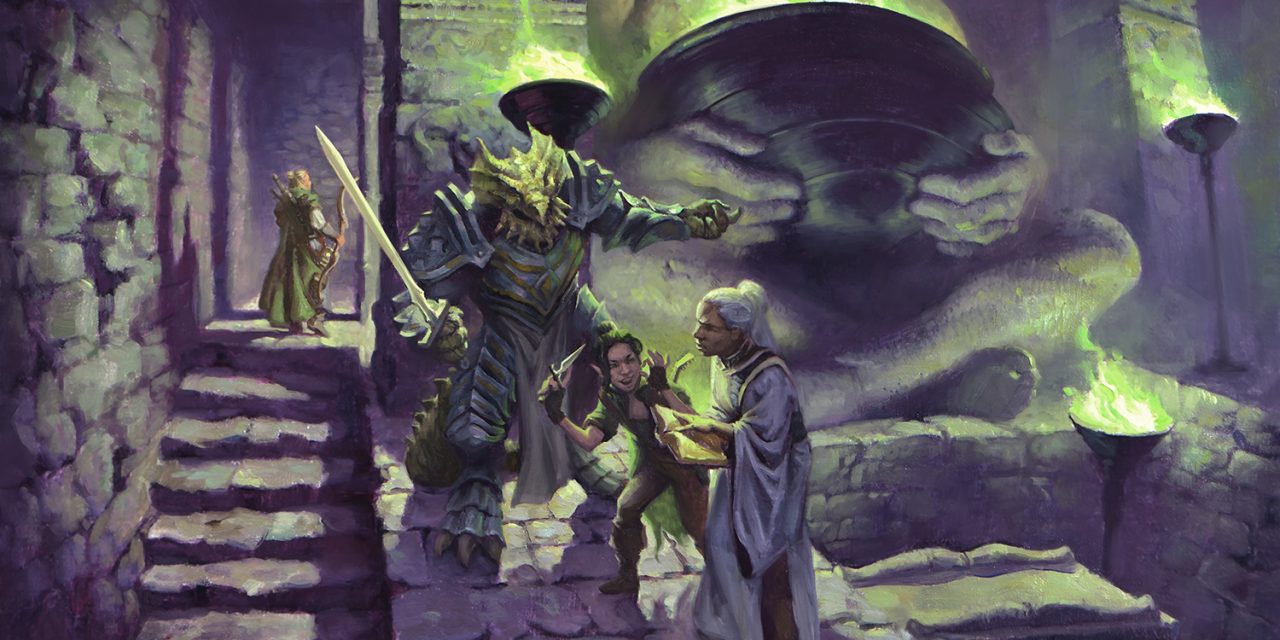

![Help! My Player is in Love With an NPC! [GM Tips for Cringe-Free Romance]](https://tabletopjoab.com/wp-content/uploads/2024/11/Dnd-Player-in-love-with-an-NPC-Tabletop-Joab-Cover-440x264.png)
